Female Metamorphosis, 2011

But metamorphosis by destruction is not the same as flight; it is rather the form of the impossibility of fleeing.
Catherine Malabou, The Ontology of the Accident
Die Metamorphose durch Zerstörung ist also kein Äquivalent der Flucht, sie ist vielmehr die Form, die die Unmöglichkeit zu fliehen annimmt.
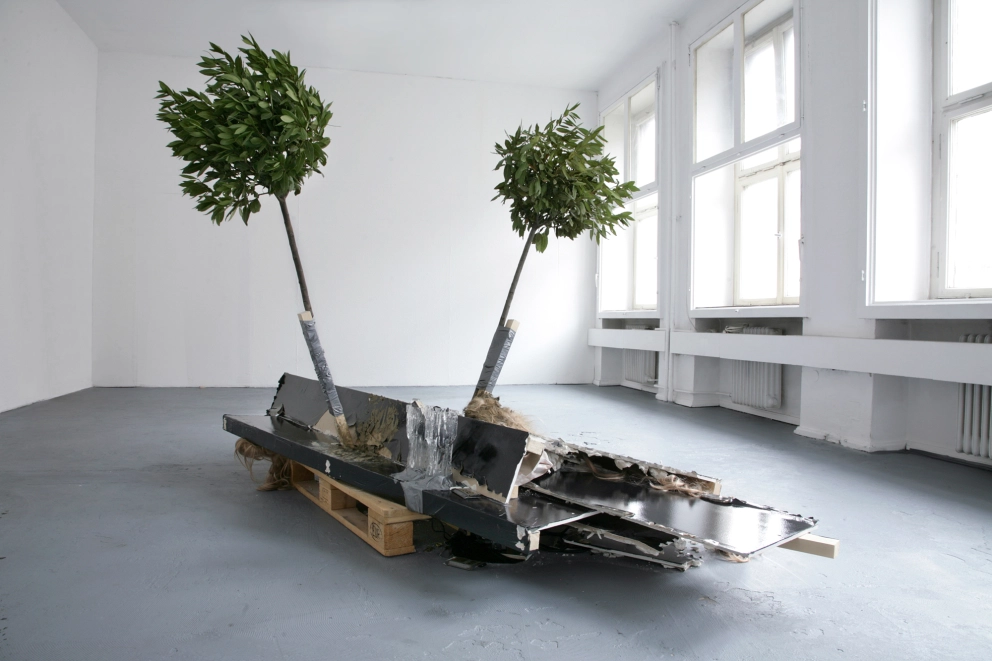
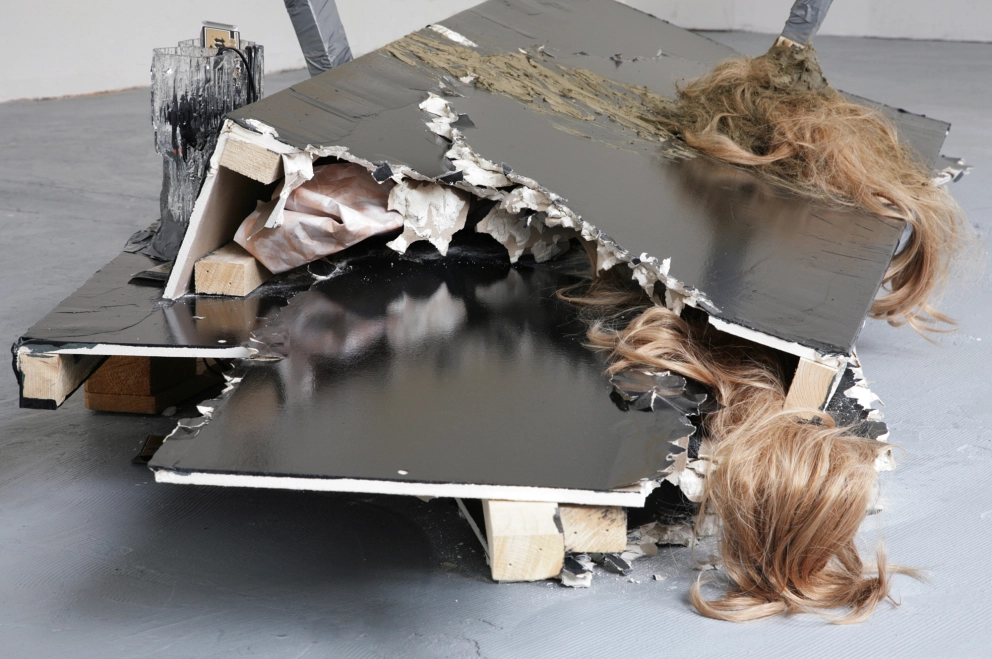
… Inspired by a prolonged stay in Finland in fall 2010, the artist became preoccupied with what it is that bestows a sense of identity on the Finns, their mythology and their closeness to nature. What particularly evoked Kuehnle‘s interest were the songs about the beautiful Aino in the Finnish epic Kalevala. After losing a singing contest, Joukahainen forces his young sister Aino to wed the aged Väinämöinen. Aino avoids this fate imposed by her brother by plunging into the water, where she is transformed into a fish with the aid of the goddess of the sea, Vellamo. Because Aino cannot stay in her old world but cannot bear the new one she chooses for herself a way out, a metamorphosis into a different, unattractive form. In Graeco-Roman mythology metamorphosis into a laurel tree also offers the fleeing nymph Daphne a last escape from the love-crazed god Apollo. In both cases, mighty nature affords these fleeing women the refuge they desire. By Astrid Becker read more…
… Angeregt durch einen längeren Aufenthalt in Finnland im Herbst 2010 setzte sich die Künstlerin mit den für die Finnen identitätsstiftenden Momenten der Mythologie und Naturnähe auseinander. Dabei weckten insbesondere die Gesänge um die wunderschöne Aino im finnischen Epos Kalevala die Aufmerksamkeit Kuehnles: Nach einem verlorenen Gesangswettkampf zwingt Joukahainen seine junge Schwester Aino, den greisenhaften Väinämöinen zu ehelichen. Sie entzieht sich dem brüderlichen Zwang durch den Gang ins Wasser und die Verwandlung in einen Fisch mit Hilfe der Meeresgöttin Vellamo. Da Aino in ihrer alten Welt nicht bleiben darf, die neue aber nicht erträgt, wählt sie selbstbestimmt einen Ausweg: die Umwandlung in eine andere, nicht anziehende Gestalt. Auch in der griechisch-römischen Mythologie bietet der fliehenden Nymphe Daphne die Metamorphose in einen Lorbeerbaum die letzte Ausflucht vor dem liebestollen Gott Apollon. Die mächtige Natur gewährt beiden Fliehenden die erwünschte Zuflucht. Von Astrid Becker mehr…
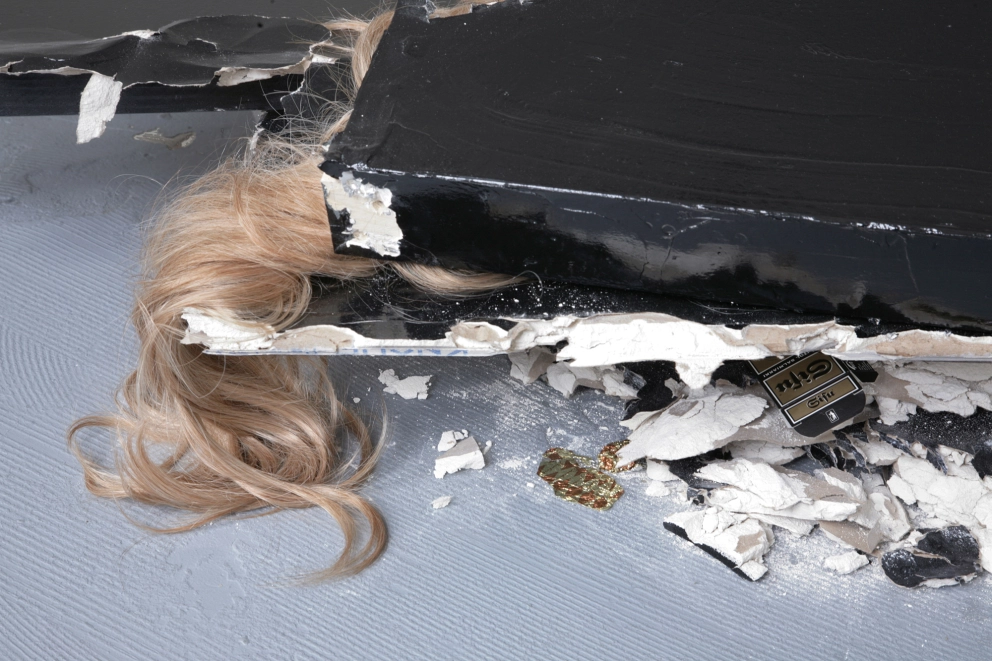
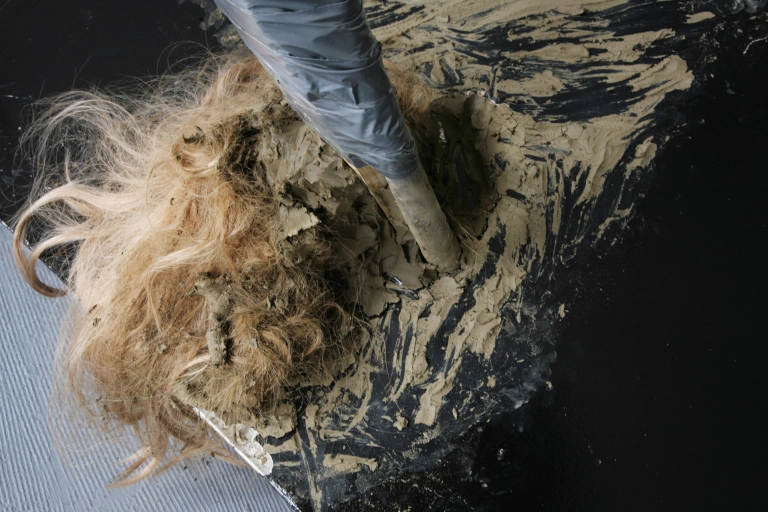
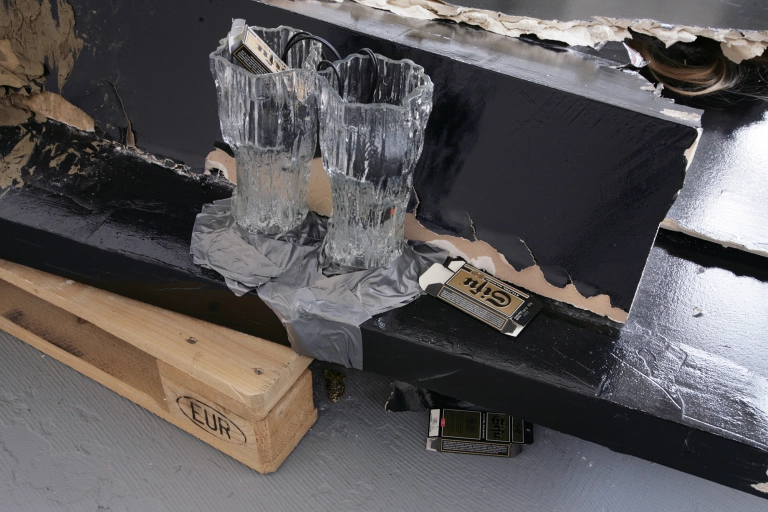
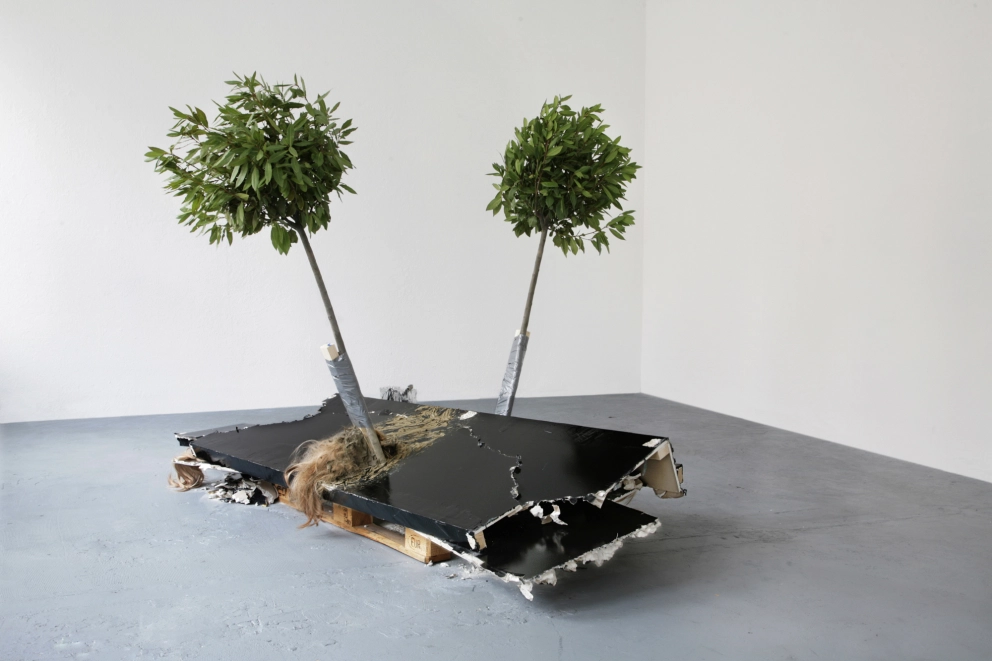
black high-gloss paint, blonde wig hair, clay, euro pallet, empty Sisu packets (liquorice pastels), gaffa tape, glass vessels, high-gloss photograph, loudspeakers, mp3 player, plasterboards, roof battens, sawn-off laurel trees
dimensions variable
Photos: Ulla Kuehnle
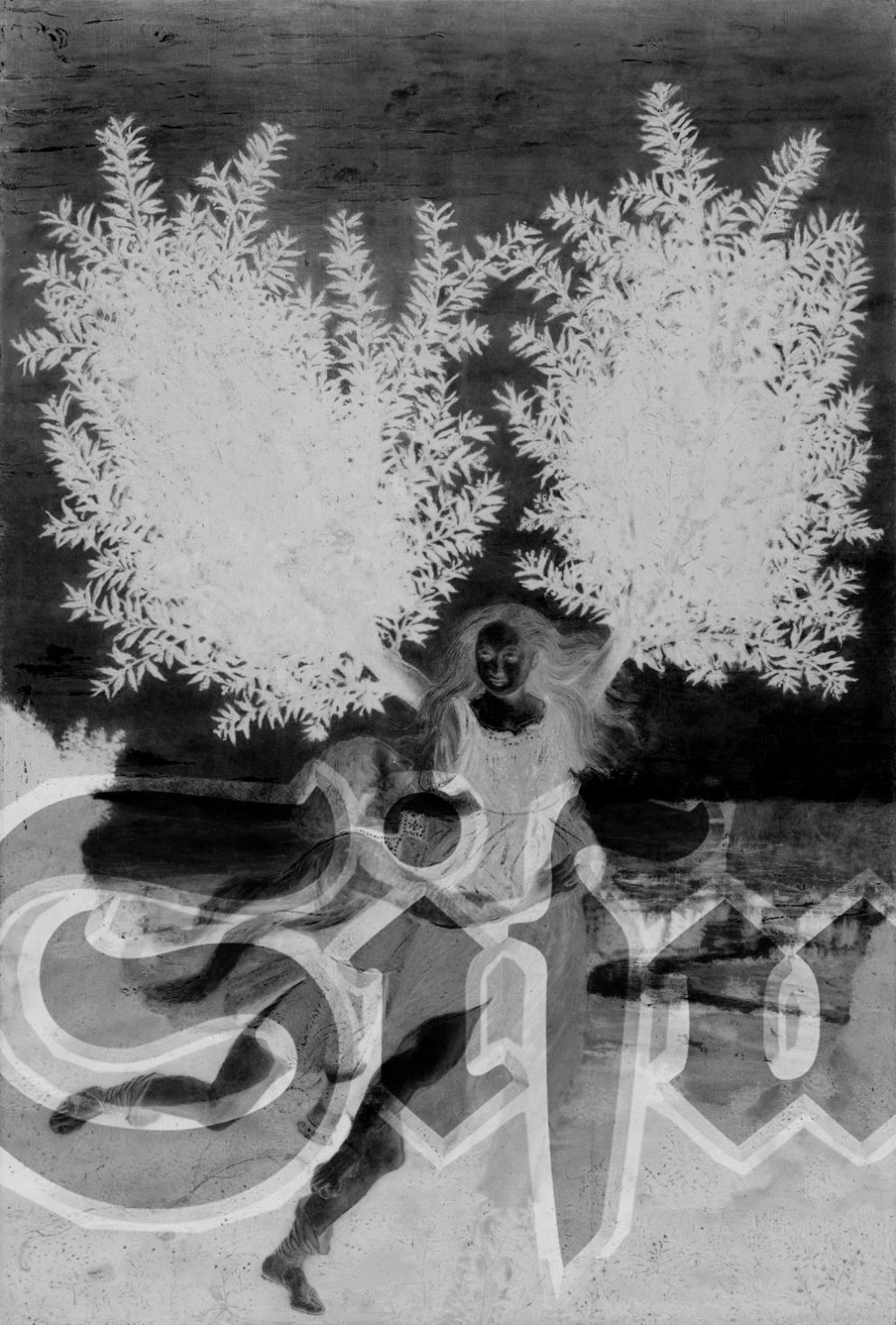
print, edition of 10 + 2 A.P.
48,3 x 33 cm with frame